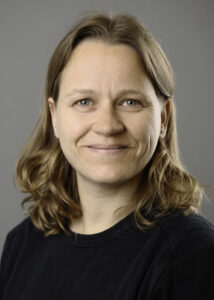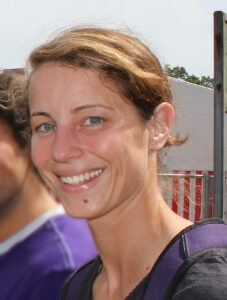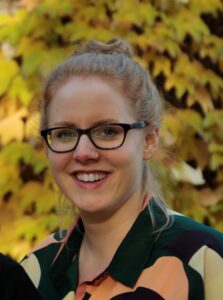Project A1 (PIs Schulenburg, Dierking, Kaleta) aims to enhance our understanding of microbiome-mediated evolution of the metaorganism. Using the nematode C. elegans as a versatile experimental model system, the project will examine the molecular and metabolic processes involved in microbiome-mediated host adaptation and protection against pathogen infection.
Evolutionary dynamics and molecular basis of C. elegans-microbiome interactions
Researchers
A1.1: Evolution of microbiome-mediated effects on host fitness
Dr. Peter Deines
A1.2: Molecular basis of microbiome-mediated protection against pathogen infection
Dr. Barbara Pees
A1.5: Metabolic modeling of host-microbiome-interactions
Rupinder Kaur
Florian Krüger
Andy Mercado Gamarra
Natchapon Srinak
Dr. Lena Best
Dr. Georgios Marinos
Related Publications
Vernetzt denken – mit Systembiologie Krankheiten verstehen
Homscheid, A., Kaleta, C., Marinos, G. (2025). BIOspektrum, 31, 470-471. doi: https://doi.org/10.1007/s12268-025-2493-x
Polyketide synthase-derived sphingolipids mediate microbiota protection against a bacterial pathogen in C. elegans
Peters, L., Drechsler, M., Herrera, M. A., Liu, J., Pees, B., Jarstorff, J., Czerwinski, A., Lubbock, F., Angelidou, G., Salzer, L., Karlis, A. M., Paczia, N., Shi, Y. M., Schulenburg, H., Kaleta, C., Witting, M., Liebeke, M., Campopiano, D. J., Bode, H. B., Dierking, K. (2025). Nature Communications, 16, 5151. doi: https://doi.org/10.1038/s41467-025-60234-1
Life-long microbiome rejuvenation improves intestinal barrier function and inflammaging in mice
Sommer, F., Bernardes, J. P., Best, L., Sommer, N., Hamm, J., Messner, B., López-Agudelo, V. A., Fazio, A., Marinos, G., Kadibalban, A. S., Ito, G., Falk-Paulsen, M., Kaleta, C., Rosenstiel, P. (2025). Microbiome, 13(1), 91. doi: https://doi.org/10.1186/s40168-025-02089-8
Metabolic modelling reveals the aging-associated decline of host–microbiome metabolic interactions in mice
Best, L., Dost, T., Esser, D., Flor, S., Gamarra, A. M., Haase, M., Kadibalban, A. S., Marinos, G., Walker, A., Zimmermann, J., Simon, R., Schmidt, S., Taubenheim, J., Künzel, S., Häsler, R., Franzenburg, S., Groth, M., Waschina, S., Rosenstiel, P., Sommer, F., Witte, O. W., Schmitt-Kopplin, P., Baines, J., Frahm, C., Kaleta, C. (2025). Nature Microbiology, 1-19. doi: https://doi.org/10.1038/s41564-025-01959-z
Caenorhabditis nematodes influence microbiome and metabolome characteristics of their natural apple substrates over time
Johnke, J., Zimmermann, J., Stegemann, T., Langel, D., Franke, A., Thingholm, L., Schulenburg, H. (2025). mSystems, e01533-24. doi: https://doi.org/10.1128/msystems.01533-24
Die Auswirkung zweier Mikrobiota-Bakterien auf das C. elegans-Proteom
Pees, B., & Dierking, K. (2024). BIOspektrum, 30(7), 763-765. doi: https://doi.org/10.1007/s12268-024-2340-5
Unanticipated specificity in effector-triggered immunity
Zárate-Potes, A., Schulenburg, H., & Dierking, K. (2024). Trends in Immunology. doi: https://doi.org/10.1016/j.it.2024.10.008
Gut-associated functions are favored during microbiome assembly across a major part of C. elegans life
Zimmermann, J., Piecyk, A., Sieber, M., Petersen, C., Johnke, J., Moitinho-Silva, L., Künzel, S., Bluhm, L., Traulsen, A., Kaleta, C., & Schulenburg, H. (2024). Mbio, 15(5), e00012-24. doi: https://doi.org/10.1128/mbio.00012-24
Wie arbeitet Wissenschaft heute? Vernetzte Zugänge für Universität und Schule
Parchmann, I., Bosch, T. B., Claussen, C., Duscher, T., Enzingmüller, C., Knüver, J., & Schulenburg, H. (2024). MNU-Journal/Verband zur Förderung des MINT-Unterrichts, 2024(1), 29-36.
The C. elegans proteome response to two protective Pseudomonas symbionts
Pees, B.*, Peters, L., Treitz, C., Hamerich, I. K., Kissoyan, K. A., Tholey, A., & Dierking, K.* (2024). MBio, 15(4), e03463-23. doi: https://doi.org/10.1128/mbio.03463-23. *Shared corresponding authors
Polyketide synthase-derived sphingolipids determine microbiota-mediated protection against pathogens in C. elegans
Peters, L., Drechsler, M., Pees, B., Angelidou, G., Salzer, L., Moors, K. A., & Dierking, K. (2024). bioRxiv, 2024-02. doi: https://doi.org/10.1101/2024.02.06.579051
Metabolic model predictions enable targeted microbiome manipulation through precision prebiotics
Marinos, G., Hamerich, I. K., Debray, R., Obeng, N., Petersen, C., Taubenheim, J., Zimmermann, J., Blackburn, D., Samuel, B. S., Dierking, K., Franke, A., Laudes, M., Waschina, S., Schulenburg, H., & Kaleta, C. (2024). Microbiology Spectrum, 12(2), e01144-23. doi: https://doi.org/10.1128/spectrum.01144-23
APEX: an Annotation Propagation Workflow through Multiple Experimental Networks to Improve the Annotation of New Metabolite Classes in Caenorhabditis elegans
Salzer, L., Novoa-del-Toro, E. M., Frainay, C., Kissoyan, K. A. B., Jourdan, F., Dierking, K., & Witting, M. (2023). Analytical Chemistry, 95(48), 17550-17558. doi: https://doi.org/10.1021/acs.analchem.3c02797
Meet the Metaorganism: A web‐based learning app for undergraduate and graduate biology students
Landis, S. H., Piecyk, A., Reitz, M., Enzingmüller, C., Schulenburg, H., Bosch, T., Dierking, K., Deines, P., Hunfeld-Häutle, J., Rappaport, K., & Duscher, T. (2023). BioEssays, 45(10), 2300043. doi: https://doi.org/10.1002/bies.202300043
Recurrent phases of strict protein limitation inhibit tumor growth and restore lifespan in a Drosophila intestinal cancer model.
Pfefferkorn RM, Mortzfeld BM, Fink C, von Frieling J, Bossen J, Esser D, Kaleta C, Rosenstiel P, Heine H, Roeder T (2023) Recurrent phases of strict protein limitation inhibit tumor growth and restore lifespan in a Drosophila intestinal cancer model. Aging&Disease in press.
The nematode Caenorhabditis elegans and diverse potential invertebrate vectors predominantly interact opportunistically
Gut-associated functions are favored during microbiome assembly across C. elegans life
Zimmermann J*, Piecyk A*, Sieber M, Petersen C, Johnke J, Moitinho-Silva L, Künzel S, Bluhm L, Traulsen A, Kaleta C, Schulenburg H (2023) Gut-associated functions are favored during microbiome assembly across C. elegans life. bioRxiv doi:10.1101/2023.03.25.534195. *Shared first authorship.
Host and microbiome jointly contribute to environmental adaptation
Petersen C*, Hamerich IK*, Adair KL*, Griem-Krey H, Torres Oliva M, Hoeppner MP, Bohannan BJM*, Schulenburg H* (2023) Host and microbiome jointly contribute to environmental adaptation. ISME Journal doi.org/10.1038/s41396-023-01507-9. *Shared first or senior authorship.
The intricate triangular interaction between protective microbe, pathogen, and host genetics determines fitness of the metaorganism
Griem-Krey H*, Petersen C*, Hamerich IK, Schulenburg H (2023) The intricate triangular interaction between protective microbe, pathogen, and host genetics determines fitness of the metaorganism. bioRxiv *shared first authors doi:10.1101/2023.03.22.533850.
Closely related Bacteroides of the murine intestinal microbiota affect each other’s growth positively or negatively
Sequential host-bacteria and bacteria-bacteria interactions determine the microbiome establishment of Nematostella vectensis
Domin H, Zimmermann J, Taubenheim J, Fuentes Reyes G, Saueressig L, Prasse D, Höppner M, Schmitz RA, Hentschel U, Kaleta C, Fraune S (2023) Sequential host-bacteria and bacteria-bacteria interactions determine the microbiome establishment of Nematostella vectensis. Microbiome doi:10.1186/s40168-023-01701-z
Isolation and Characterization of the Natural Microbiota of the Model Nematode Caenorhabditis elegans
Petersen, C., Dierking, K., Johnke, J., Schulenburg, H. Isolation and Characterization of the Natural Microbiota of the Model Nematode Caenorhabditis elegans. J. Vis. Exp. (186), e64249, doi:10.3791/64249 (2022).
Exploring Effects of C. elegans Protective Natural Microbiota on Host Physiology.
Preconditioning with natural microbiota strain Ochrobactrum vermis MYb71 influences Caenorhabditis elegans behavior
In vitro interaction network of a synthetic gut bacterial community.
Weiss AS, Burrichter AG, Durai Raj AC, von Strempel A, Meng C, Kleigrewe K, Münch PC, Rössler L, Huber C, Eisenreich W, Jochum LM, Göing S, Jung K, Lincetto C, Hübner J, Marinos G, Zimmermann J, Kaleta C, Sanchez A, Stecher B (2021) ISME J. doi: 1038/s41396-021-01153-z
Microbial regulation of hexokinase 2 links mitochondrial metabolism and cell death in colitis.
Hinrichsen F, Hamm J, Westermann M, Schröder L, Shima K, Mishra N, Walker A, Sommer N, Klischies K, Prasse D, Zimmermann J, Kaiser S, Bordoni D, Fazio A, Marinos G, Laue G, Imm S, Tremaroli V, Basic M, Häsler R, Schmitz RA, Krautwald S, Wolf A, Stecher B, Schmitt-Kopplin P, Kaleta C, Rupp J, Bäckhed F, Rosenstiel P, Sommer F (2021) Cell Metab 33(12):2355-2366.e8. doi: 1016/j.cmet.2021.11.004
Metabolic dissimilarity determines the establishment of cross-feeding interactions in bacteria
Giri S, Oña L, Waschina S, Shitut S, Yousif G, Kaleta C, Kost C (2021) Curr Biol. S0960-9822(21)01408-1. doi: 1016/j.cub.2021.10.019.
Microbes to-go: slugs as source for Caenorhabditis elegans microbiota acquisition.
Pees B, Johnke J, Möhl M, Hamerich IK, Leippe M, Petersen C (2021) Environ. Microbiol. doi:10.1111/1462-2920.15730.
The genetics of gene expression in a Caenorhabditis elegans multiparental recombinant inbred line population.
Snoek BL, Sterken MG, Nijveen H, Volkers RJM, Riksen J, Rosenstiel PC, Schulenburg H, Kammenga JE. (2021) G3 (Bethesda). 11(10):jkab258. doi: 10.1093/g3journal/jkab258.
The effects of nested miRNAs and their host genes on immune defense against Bacillus thuringiensis infection in Caenorhabditis elegans.
Zárate-Potes A, Yang W, Andresen B, Nakad B, Haase D, Rosenstiel P, Dierking K*, Schulenburg H* (2021) Dev Comp Immunol. 123:104144 doi: 10.1016/j.dci.2021.104144 *Shared senior authorship.
Effector and regulator: Diverse functions of C. elegans C-type lectin-like domain proteins.
Pees B, Yang W, Kloock A, Petersen C, Peters L, Fan L, Friedrichsen M, Butze S, Zárate-Potes A, Schulenburg H, Dierking K (2021) PLoS Pathogens. 17(4):e1009454. doi: 10.1371/journal.ppat.1009454
gapseq: informed prediction of bacterial metabolic pathways and reconstruction of accurate metabolic models
Zimmermann J, Kaleta C, Waschina S (2021) Genome Biol. 22(81):1-35. doi: 10.1186/s13059-021-02295-1
Defining the nutritional input for genome-scale metabolic models: a roadmap
Marinos G, Kaleta C, Waschina S (2020) PLOS ONE 15(8): e0236890. doi: 10.1371/journal.pone.0236890
Microbiome-mediated plasticity directs host evolution along several distinct time scale
Kolodny O, Schulenburg H (2020) Phil. Trans. R. Soc. B. 375: 20190589. doi: 10.1098/rstb.2019.0589
Metaorganismusforschung trifft Schule: Wissenschaftskommunikation an der Universität zu Kiel.
Claussen C, Kapitza M, Knapp JM, Bernholt A, Schulenburg H, Kremer KH (2020). Biologie in unserer Zeit (BiuZ), 50(4), 270-277. doi: 10.1002/biuz.202010713
CeMbio – The Caenorhabditis elegans microbiome resource
Receptors mediating host-microbiota communication in the metaorganism: the invertebrate perspective.
Dierking K, Pita L (2020) Front. Immunol. 11:1251. doi: 10.3389/fimmu.2020.01251
The functional repertoire contained within the native microbiota of the model nematode Caenorhabditis elegans
Zimmermann J*, Obeng N*, Yang W, Pees B, Petersen C, Waschina S, Kissoyan KAB, Aidley J, Hoeppner MP, Bunk B, Spröer C, Leippe M, Dierking K, Kaleta C*, Schulenburg H* (2019) ISME J. 14: 26–38. * Shared first or senior authorship doi: 10.1038/s41396-019-0504-y
Prdx4 limits caspase-1 activation and restricts inflammasome-mediated signaling by extracellular vesicles
Lipinski S, Pfeuffer S, Arnold P, Treitz C, Aden K, Ebsen H, Falk-Paulsen M, Gisch N, Fazio A, Kuiper J, Luzius A, Billmann-Born S, Schreiber S, Nuñez G, Beer HD, Strowig T, Lamkanfi M, Tholey A, Rosenstiel P (2019) EMBO J. 38(20) doi: 10.15252/embj.2018101266.
Comparative analysis of amplicon and metagenomic sequencing methods reveals key features in the evolution of animal metaorganisms
Rausch P, Rühlemann M, Hermes BM, Doms S, Dagan T, Dierking K, Domin H, Fraune S, von Frieling J, Hentschel U, Heinsen F-A, Höppner M, Jahn MT, Jaspers C, Kissoyan KAB, Langfeldt D, Rehman A, Reusch TBH, Roeder T, Schmitz RA, Schulenburg H, Soluch R, Sommer F, Stukenbrock E, Weiland-Bräuer N, Rosenstiel P, Franke A, Bosch T, Baines JF (2019) Microbiome, doi: 10.1186/s40168-019-0743-1
The inducible response of the nematode Caenorhabditis elegans to members of its natural microbiome across development and adult life
Yang W#, Petersen C#, Pees B#, Zimmermann J, Waschina S, Dirksen P, Rosenstiel P, Tholey A, Leippe M, Dierking K, Kaleta C*, Schulenburg H*. Front Microbiol. 10:1793. # Equal contribution as first authors, * Equal contribution as senior authors doi: 10.3389/fmicb.2019.01793.
aFold – using polynomial uncertainty modelling for differential gene expression estimation from RNA sequencing data
Yang W, Rosenstiel P, Schulenburg H (2019) BMC Genomics, 20:364, 1-17. doi: 10.1186/s12864-019-5686-1
A multi-parent recombinant inbred line population of C. elegans allows identification of novel QTLs for complex life-history traits
Snoek BL, Volkers RJM, Nijveen H, Petersen C, Dirksen P, Sterken MG, Nakad R, Riksen J, Rosenstiel P, Stastna JJ, Braeckman BP, Harvey SC, Schulenburg H*, Kammenga JE* (2019) BMC Biol. 17:24. * Shared senior authorship doi: 10.1186/s12915-019-0642-8
Natural C. elegans microbiota protects against infection via production of a cyclic lipopeptide of the viscosin group
Kohar Kissoyan, Moritz Drechsler, Eva-Lena Stange, Johannes Zimmermann, Christoph Kaleta, Helge Bode und Katja Dierking (2019) Current Biology. DOI: 10.1016/j.cub.2019.01.050
The Saposin-Like Protein AplD Displays Pore-Forming Activity and Participates in Defense Against Bacterial Infection During a Multicellular Stage of Dictyostelium discoideum.
Dhakshinamoorthy R, Bitzhenner M, Cosson P, Soldati T, Leippe M (2018); Front. Cell. Infect. Microbiol., 8:73. doi: 10.3389/fcimb.2018.00073
The Caenorhabditis elegans proteome response to naturally associated microbiome members of the genus Ochrobactrum
Cassidy L, Petersen C, Treitz C, Dierking K, Schulenburg H, Leippe M, Tholey A (2018); Proteomics, doi: 10.1002/pmic.201700426
Miniaturized dispersive liquid-liquid microextraction and MALDI MS using ionic liquid matrices for the detection of bacterial communication molecules and virulence factors.
Leipert J, Bobis I, Schubert S, Fickenscher H, Leippe M, Tholey A (2018); Anal Bioanal Chem. , pp 1–12. doi: 10.1007/s00216-018-0937-6
Metaorganisms in extreme environments: do microbes play a role in organismal adaptation?
Bang C, Dagan T, Deines P, Dubilier N, Duschl W J, Fraune S, Hentschel U, Hirt H, Hülter N, Lachnit T, Picazo D, Galan P L, Pogoreutz C, Rädecker N, Saad M M, Schmitz R A, Schulenburg H, Voolstra C R, Weiland-Bräuer N, Ziegler M, Bosch T C G (2018); Zoology, doi: 10.1016/j.zool.2018.02.004
We Are Not Alone: The iMOP Initiative and Its Roles in a Biology- and Disease-Driven Human Proteome Project.
Tholey A, Taylor N L, Heazlewood J L, Bendixen E (2017); J Proteome Res., 16(12):4273-4280. doi: 10.1021/acs.jproteome.7b00408
Insights into Microalga and Bacteria Interactions of Selected Phycosphere Biofilms Using Metagenomic, Transcriptomic, and Proteomic Approaches.
Krohn-Molt I, Alawi M, Förstner K U, Wiegandt A, Burkhardt L, Indenbirken D, Thieß M, Grundhoff A, Kehr J, Tholey A, Streit W R (2017); Front Microbiol., doi: 10.3389/fmicb.2017.01941
Identification and Quantification of N-Acyl Homoserine Lactones Involved in Bacterial Communication by Small-Scale Synthesis of Internal Standards and Matrix-Assisted Laser Desorption/Ionization Mass Spectrometry.
Leipert J, Treitz C, Leippe M, Tholey A (2017); J Am Soc Mass Spectrom., 28(12):2538-2547. doi: 10.1007/s13361-017-1777-x
The Natural Biotic Environment of Caenorhabditis elegans.
Schulenburg H, Félix M A (2017); Genetics., 206(1):55-86. doi: 10.1534/genetics.116.195511
Caenorhabditis elegans as a model for microbiome research.
Zhang F, Berg M, Dierking K, Félix M A, Shapira M, Samuel B, Schulenburg H (2017); Front. Microbiol., 8:485. doi: 10.3389/fmicb.2017.00485
Efficacy of Sterile Fecal Filtrate Transfer for Treating Patients With Clostridium difficile Infection. Gastroenterology.
Ott S J, Waetzig G H, Rehman A, Moltzau-Anderson J, Bharti R, Grasis J A, Cassidy L, Tholey A, Fickenscher H, Seegert D, Rosenstiel P, Schreiber S (2017); Gastroenterology, 152(4):799-811.e7. doi: 10.1053/j.gastro.2016.11.010
Differential quantitative proteome analysis of Escherichia coli grown on acetate versus glucose.
Treitz C, Enjalbert B, Portais J C, Letisse F, Tholey A (2016); Proteomics., 16(21):2742-2746. doi: 10.1002/pmic.201600303
Combination of Bottom-up 2D-LC-MS and Semi-top-down GelFree-LC-MS Enhances Coverage of Proteome and Low Molecular Weight Short Open Reading Frame Encoded Peptides of the Archaeon Methanosarcina mazei.
Cassidy L, Prasse D, Linke D, Schmitz R A, Tholey A (2016)
J Proteome Res., 15(10):3773-3783. doi: 10.1021/acs.jproteome.6b00569
The native microbiome of the nematode Caenorhabditis elegans: Gateway to a new host-microbiome model.
Dirksen P, Marsh SA, Braker I, Heitland N, Wagner S, Nakad R, Mader S, Petersen C, Kowallik V, Rosenstiel P C, Felix M A, Schulenburg H (2016); BMC Biology, 14:38. doi:10.1186/s12915-016-0258-1
Antimicrobial effectors in the nematode C. elegans – an outgroup to the Arthropoda.
Dierking K, Yang W, Schulenburg H (2016); Phil Trans R Soc Lond B., 371. doi:














